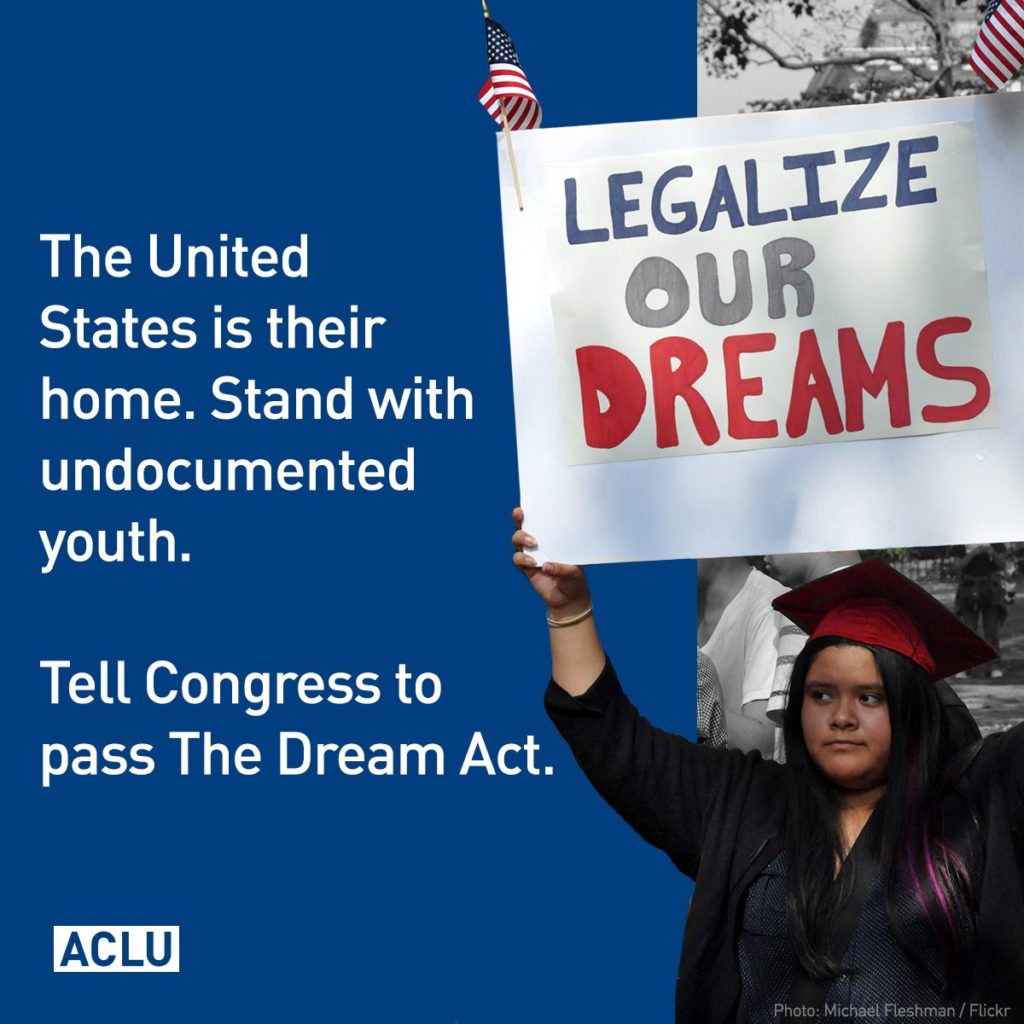News > Immigration In The United States
Sorting out the Dream Acts
Posted on Jul 31 2017
 The Dreamers – young people who grew up here after being brought to the United States as children — are under attack again. After Congress tried and failed to pass the Development, Relief, and Education for Alien Minors (DREAM) Act over and over again, President Barack Obama acted to protect these young people. In 2012, he established the Deferred Action for Childhood Arrivals (DACA) program. Young people who qualified for DACA received temporary protection from deportation and permission to work, renewable under new presidential orders every two years.
The Dreamers – young people who grew up here after being brought to the United States as children — are under attack again. After Congress tried and failed to pass the Development, Relief, and Education for Alien Minors (DREAM) Act over and over again, President Barack Obama acted to protect these young people. In 2012, he established the Deferred Action for Childhood Arrivals (DACA) program. Young people who qualified for DACA received temporary protection from deportation and permission to work, renewable under new presidential orders every two years.
That was then. Trump is now. As a candidate, he said he would end DACA. As president, he has waffled back and forth. Now Texas and nine other states, in a letter to the president from the states’ attorneys general, have threatened to sue if the administration doesn’t start phasing out the program by September 5. On the other side, 20 state attorneys general have written to the president asking him to protect DACA, as have 42 U.S. Senators.
While he was Secretary of Homeland Security, John Kelly said that, even though he personally supported DACA, there might be no legal grounds to support it in court. Now Kelly, a strong anti-immigrant voice within the administration, has moved up to a position as White House Chief of Staff.
Meanwhile, the Dream Act is alive again in Congress. On July 20, 2017, Senators Lindsey Graham (R-SC) and Dick Durbin (D-IL) introduced the Dream Act of 2017. A week later, two bills were introduced in the House of Representatives that would protect also Dreamers – the bipartisan Dream Act of 2017, introduced by Ileana Ros-Lehtinen (R-FL) and Lucille Roybal-Allard (D-CA), and the American Hope Act, introduced by Nancy Pelosi (D-CA), Congressman Luis Gutierrez (D-IL) and the Congressional Hispanic Caucus.
The National Immigration Law Center (NILC) published a side-by-side comparison of the 2010 and 2017 Dream Acts and DACA, which generally shows the 2017 Dream Act as more inclusive than DACA or the 2010 legislation. I haven’t seen a comparison of the 2017 Dream Act and the American Hope Act. Any Dream Act version, however, would provide legal protection for Dreamers and current DACA recipients, rather than leaving them subject to the whim of the president.
Most Americans support Dreamers. A Morning Consult/Politico poll showed strong support for Dreamers, all along the political spectrum:
“In a Morning Consult survey from late April, almost 4 in 5 (78 percent) registered voters said the Dreamers should be allowed to stay in the country, with more than half (56 percent) expressing support for eventual citizenship….
“There was also broad support in favor of the Dreamers among the voters who helped elect Trump in November: 73 percent of those voters said the Dreamers should be allowed to stay in the country, with almost half (48 percent) of those voters also saying they should have a path to becoming U.S. citizens.”
Would any Dream Act have a chance of passage in this Congress? And if a Dream Act passed, would the president sign it? In today’s chaotic national political scene, that’s impossible to say.




